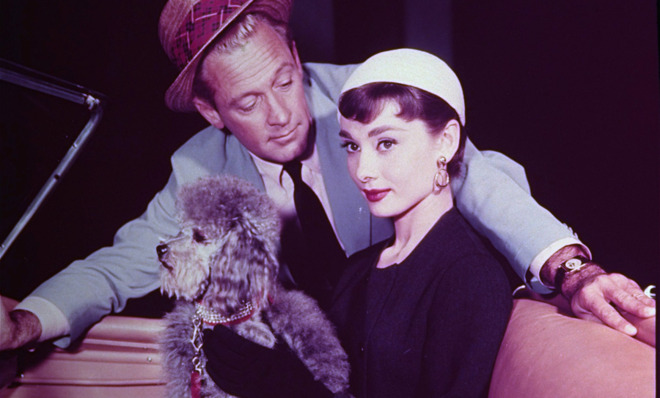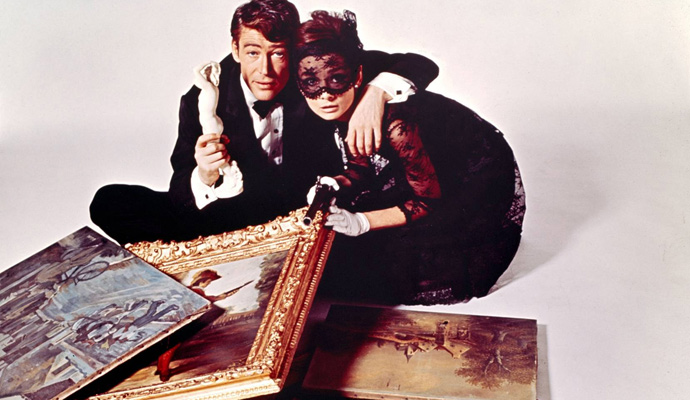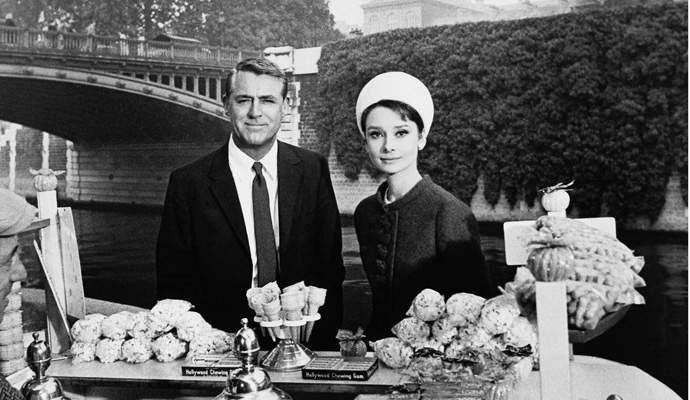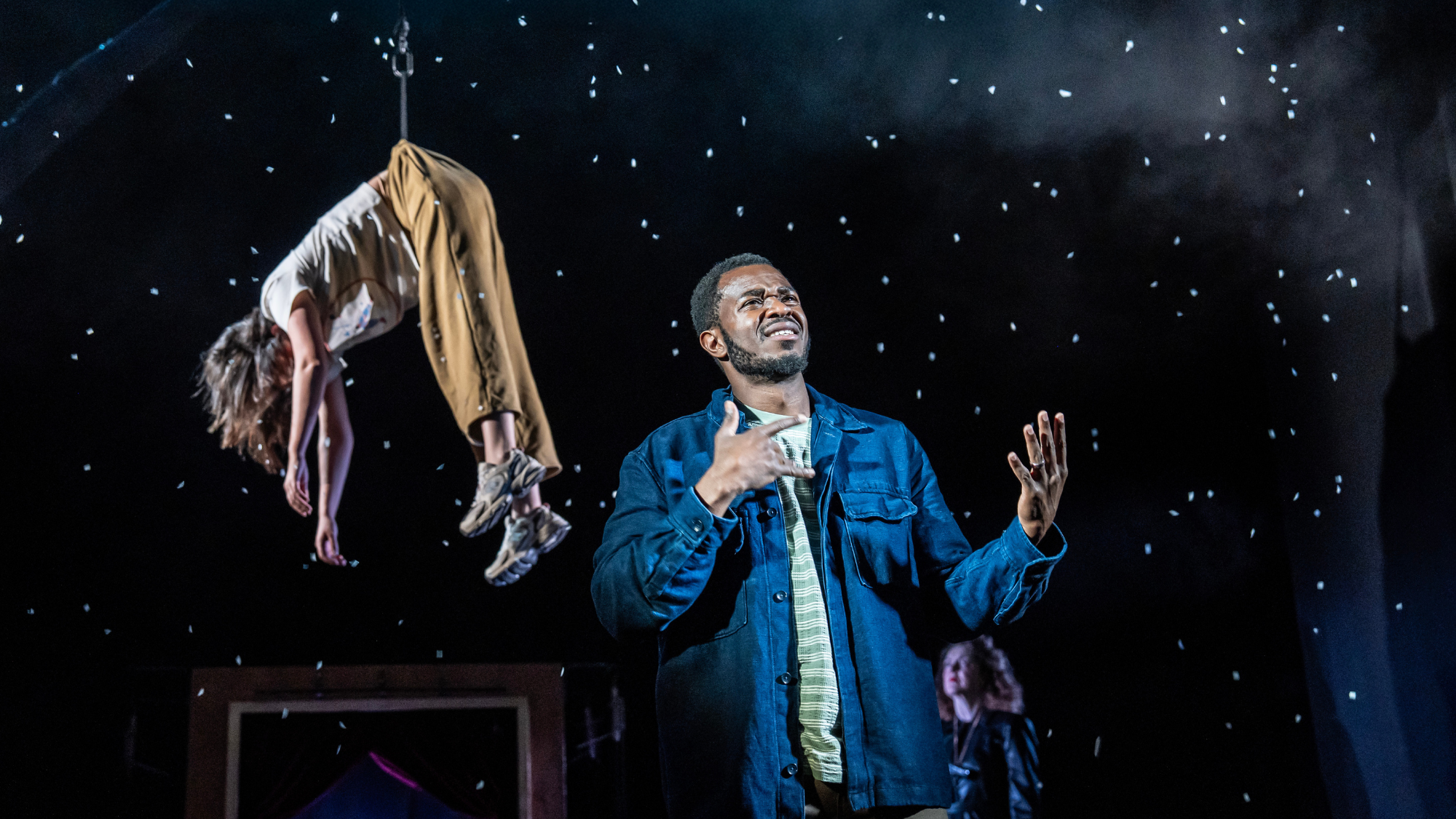Girls on Film: The hidden feminism of Audrey Hepburn
Hepburn's legacy as a fashion icon has overshadowed the feminist messages of her films


In conversations about the women of Old Hollywood, two old stereotypes persist: Katharine Hepburn was the feminist, and Audrey Hepburn — who would have been 85 on Sunday — was the style icon. Katharine was a working woman who wore pants — a "strong female presence within traditional boy-girl stories." Audrey, meanwhile, was the waif with "gamine yet feminine chic," who launched Hollywood's obsession with skinniness.
When Audrey's father added "Hepburn" to the family's surname, he unknowingly kicked off eternal comparisons between his daughter and Katharine (who was unrelated). Such comparisons have obscured the fact that Audrey Hepburn had her own powerful relationship with feminism. She was a diminutive powerhouse who repeatedly struggled against patriarchy.
It's no wonder that today, Audrey Hepburn's most noted attribute is her style. She's the woman who brought Edith Head's fashions to life, and she was the muse of Hubert de Givenchy. Audrey made pants a female fashion statement, and her love of flats gave women an out from towering stilettos.
The Week
Escape your echo chamber. Get the facts behind the news, plus analysis from multiple perspectives.

Sign up for The Week's Free Newsletters
From our morning news briefing to a weekly Good News Newsletter, get the best of The Week delivered directly to your inbox.
From our morning news briefing to a weekly Good News Newsletter, get the best of The Week delivered directly to your inbox.
But she was always at odds with her fame. Audrey was, in the words of theorist Roland Barthes, the "woman as child, woman as kitten," with a face that was "an Event." Her slight frame and softness made many see her as childlike. (When Isaac Mizrahi re-created iconic images of Audrey for a commercial, he used a then-teenage Natalie Portman to portray her.) What most people didn't know is that Hepburn's wasn't the body of an "ordinary woman"; it was the visual remnant of her starvation as a child in the Netherlands during World War II, which resulted in a slew of ailments that led to "a lifetime of quietly suffering frail health."
In short, her pain became her beauty — and by extension, her livelihood. It was a battle between the reality and the ideal, which would repeat for Hepburn as feminist elements warred with old-world patriarchy, in ways no more obvious than her long series of on-screen suitors.
Hepburn was 24 opposite Gregory Peck's 37 in Roman Holiday; 25 to William Holden's 36 and Humphrey Bogart's 55 in Sabrina; 27 to Henry Fonda's 51 in War and Peace; 28 to Fred Astaire's 58 in Funny Face; 28 to Gary Cooper's 56 in Love in the Afternoon; 32 to Buddy Ebsen's 53 in Breakfast at Tiffany's; 34 to Cary Grant's 59 in Charade; and 35 to Rex Harrison's 56 in My Fair Lady. (Fortunately, Breakfast at Tiffany's also broke the trend by giving her a suitor in the 33-year-old George Peppard.) At 37, she finally earned the unthinkable: a younger suitor, in the 34-year-old Peter O'Toole in How to Steal a Million.

Of course, Hepburn's paramours weren't just any older men — many were the crème de la crème of cinema. When Cary Grant kept refusing to act opposite her, the job went to stars like Peck and Cooper. Grant finally gave in with Charade, but only if her character pursued him to keep him from looking like a lecherous old man. (Ironic, he would soon marry Dyan Cannon, a woman even younger than Hepburn.) Her cinematic suitors were the stars audiences loved, but they were also symbols of the patriarchy she was struggling against — the old world meeting the new.
A free daily email with the biggest news stories of the day – and the best features from TheWeek.com
Hepburn's breakout role in Roman Holiday holds the first sparks of her feminist struggle. Her Ann is the crown princess, bound within the regimented walls of tradition. As royalty, she theoretically has power — but her life is little more than sheltered tedium. Ann is hungry for discoveries of her own and runs off to experience the world outside. She ultimately chooses to return to her obligations, but it's with a more assured sense of purpose as she gives up love for duty. The battle between agency and romance, which Hepburn spent much of her career exploring, had begun.
Roman Holiday showed life's potential, and Sabrina became the cage to contain it. Hepburn played a despondent child too in love with William Holden's rich womanizer to value her own life. Sabrina is at the whim of a father desperate to save her, and men who seek to manipulate her for their own agendas — the charming but untrustworthy David with the roaming eye, and his brother Linus (Bogart) who pursues her and kisses her to distract her from his brother, insisting that "it's all in the family." It was a refrain all the more troubling in Bogart's mouth — his obvious disdain about the production bled into his performance, turning what was theoretically a story about love into a story about prey.
Sabrina might be able to escape, learn a trade, and delight in some measure of freedom — but she's ultimately under the control of the men who have power around her. Three years after Sabrina's release, her starring turn in Funny Face challenged those same power structures. Superficially, Funny Face is just one more in Hepburn's line of fashion-conscious romances: Jo is easily pushed around and made over until the awkward duckling becomes an elegant smash. But for all the fawning, the film never forgets that this world preys upon Jo as she tries to hold on to her individuality.

In Funny Face, fashion is a kind of manipulation. Publisher Maggie Prescott creates crazes she herself wouldn't be caught dead in. When she wants to merge beauty with intelligence, her team storms Jo's bookshop, taking over and locking her out when she protests. Photographer Dick might try to help her clean up the aftermath, but he also says his unsolicited kisses are "empathy," and his desire makes Jo the unwilling target of Prescott's fashion wrath. Body becomes no more sacred than property as the publisher's team attacks her, ripping at her clothes and approaching her with large scissors as she struggles.
She ultimately accedes, but only to get the opportunity to meet her philosopher idol. Yes, she'll play their game, but only as it serves her own interests — until the de rigueur romance takes over, making the philosopher the lecher that allows Hepburn to run to Astaire.
In many ways, the narrative of Funny Face is the cinematic embodiment of what would happen to its star: an obsession with style masking the struggle behind her glamour. By Love in the Afternoon the following year, Hepburn's romantic heroine trades her innocence for sexuality, crafting an imaginary list of paramours to seem on equal footing with Cooper's international playboy. Four years later, her Holly Golightly would make that fantasy a reality with Breakfast at Tiffany's.
Blake Edwards' film never explicitly describes Holly's occupation — and many have admired the film without even noticing — but the darker essence of Truman Capote's novella, in which Holly is, in his words, an "American geisha," are easy to spot. Men feel a sense of personal ownership over Holly, coming at all hours of the day and night — and when she sees that Paul is also a kept man, she treats him as a kindred spirit. Holly doesn't work and doesn't come from money; she just has a long parade of men to help her make ends meet.
Holly is called a phony, but she's not merely superficial. Her entire persona is an act that allows her to manipulate the patriarchy around her instead of struggling within it. She's a small-town girl who had to marry an old man when she was just 13, and then finally broke free to live her own life, creating a posh and magnetic alter ego that allows her to thrive without professional skills. The idealist might see Holly and Paul's movie-ending kiss as a happy ending, but the realist knows that she will eventually move on — as she does in the novella — because she's still just playing a part to survive.
Where Holly Golightly defied heterosexual convention (and even inspired noted feminist Gloria Steinem), the same year's The Children's Hour allowed Hepburn's confrontational poise to venture into uncharted cinematic territory: a woman facing a lesbian scandal in a time when the word "lesbian" couldn't even be uttered on-screen. For years, Hollywood had struggled to adapt Lillian Helman's modern spin on the scandal that rocked Scotland in the 19th century — going so far as to make it a tale of heterosexual adultery to appease censors in the '30s — until The Hays Code lightened up and Hollywood was finally allowed to directly reference the idea (if not the language) of homosexuality.
The film follows two women who start a school, only to see it ruined by a devilish child retaliating against punishment by telling a series of lies that ultimately lead Hepburn to ruin and her partner (Shirley MacLaine) to death, in one of cinema's earliest examples of a character coming out on-screen. In The Celluloid Closet, MacLaine claimed that neither star really knew what the film was actually about, suggesting that Hepburn was innocent to the progressive material. "We were in the mindset of not understanding what we were basically doing," she claims. But it’s a strange statement to make, due to both the film's obvious treatment of the subject and MacLaine’s own recollections on her website, where she talks about the theme and how she wishes she had "fought more with Billy Wilder to investigate the lesbian relationship." [Ed: despite MacLaine's recollections, the film's director was actually William Wyler.]
These choices show that Hepburn was clearly striving for diversity, from genre switches between contemporary and period pieces to her many characters challenging the men seeking to control her. Her feminism was more about the ongoing struggle than the possibility of solving it. In her filmography, there was no neat ending to institutional patriarchy; Audrey faced it again and again.

By Charade in 1963, one decade after her breakout role, Hepburn was once again playing a woman manipulated by men. "Stop treating me like a child," she complains in one scene. A year later, in Paris When It Sizzles, her modern heroine looking for a "comprehensive study of depravity" once again battles the charm of William Holden.
In her second mega-classic, My Fair Lady, Hepburn openly battles the oppressive men around her as Eliza Doolittle. The misogynist Henry Higgins is openly hostile, calling her a "squashed cabbage leaf" and happily detailing her many faults, even as his egotism inspires him to transform her into a lady. Once again, her body is not her own; Higgins' help grabs her, ignoring her protests as they rip her clothes from her body for their master's interests.
Like Funny Face, her character plays along to take advantage of the opportunity. But Eliza also realizes the impossible position of her new stature. As she battles his sexism and he trains her, Higgins thinks his teachings and approach have given her independence — but this is Edwardian London, when suffragettes struggled to gain even basic freedoms. She knows that her transformation will award her little agency — not as a person or a film character. Eliza is caught without opportunity, and Hepburn is caught in the Hollywood system, where the ambiguous departure of the Pygmalion source material is traded for an unconvincing happy ending.
It wasn't until 1967's Wait Until Dark that Hepburn finally got the chance to be seen as a woman, face the patriarchy, and beat it. A group of criminals conspired to regain drugs that her husband unwittingly possesses, and deem Hepburn's Susy an innocuous woman who won't be a problem: she's slight, alone, and blind. The men — like many of Hepburn's earlier suitors — conspire against her. But this time, she does likewise, turning her apartment into her dark playing field that allows her to defeat her attackers without aid.
I like to think Hepburn's lasting legacy will eventually turn from her reputation as a stylish romantic paramour and launch a new appreciation for a woman who found a way to survive the constructs around her when the stakes seem impossible. In film after film, she is a lady of romance and sweetness — but she is also the woman who turned her physical pain into a stylish iconography and who managed to infuse her characters with real-life struggle, playing the game while challenging it.
"The difference between a lady and a flower girl is not how she behaves, but how she is treated," Eliza Doolittle explains — and Audrey Hepburn's filmography embodies it.
Girls on Film is a weekly column focusing on women and cinema. It can be found at TheWeek.com every Friday morning. And be sure to follow the Girls on Film Twitter feed for additional femme-con.
Monika Bartyzel is a freelance writer and creator of Girls on Film, a weekly look at femme-centric film news and concerns, now appearing at TheWeek.com. Her work has been published on sites including The Atlantic, Movies.com, Moviefone, Collider, and the now-defunct Cinematical, where she was a lead writer and assignment editor.
-
 Prince charming: Harry’s tea with King sparks royal reconciliation rumours
Prince charming: Harry’s tea with King sparks royal reconciliation rumoursTalking Point Are the royals (and the UK public) ready to welcome the Duke of Sussex back in?
-
 Has Israel’s Qatar strike scuppered a ceasefire?
Has Israel’s Qatar strike scuppered a ceasefire?Today’s Big Question Netanyahu ‘gambles’ on ‘overwhelming strength’ rather than diplomacy in attack on Hamas negotiation team in Doha
-
 Deaf Republic: ‘an experimental epic of war and resistance’
Deaf Republic: ‘an experimental epic of war and resistance’The Week Recommends Ukrainian-American writer Ilya Kaminsky’s poetry collection is brought to the stage in this ‘enthralling’ production
